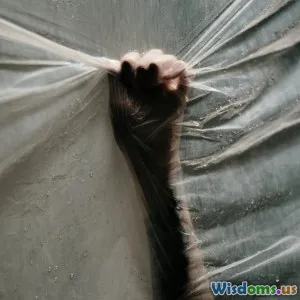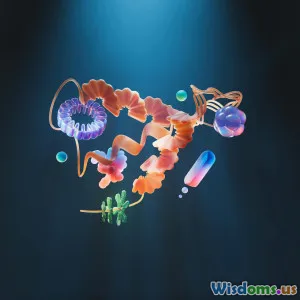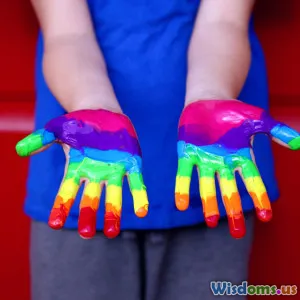
Understanding Emotion Through Visual Art and Film
7 min read Explore how visual art and film unlock human emotions and influence our perception through compelling visuals. (0 Reviews)
Understanding Emotion Through Visual Art and Film
Humans have an intrinsic need to feel and understand emotions—those invisible forces that drive our thoughts, decisions, and memories. Visual art and film have long served as profound mediums for exploring and expressing these emotions. From a single photograph capturing a fleeting smile to an entire film built around an emotional journey, these art forms enable us to see, feel, and comprehend emotions viscerally.
In this article, we will unravel how visual art and film engage our emotional sensibilities, examining key techniques artists and filmmakers use to communicate feeling, foster empathy, and create impactful narratives.
The Emotional Power of Visual Art
Color as Emotional Language
Color profoundly influences our emotional response to artwork. Psychologists recognize color’s power; blue often evokes calm or melancholy, red invokes passion or anger, while yellow can radiate warmth or anxiety. Artists manipulate color palettes to establish mood instantly.
Consider Mark Rothko's color field paintings—vast expanses of color that stir deep contemplation and existential emotion. Rothko famously said his paintings were meant to be experienced emotionally rather than intellectually, demonstrating how color alone can communicate complex feelings.
Composition and Form
The arrangement of elements within a visual frame guides our emotional interpretation. A chaotic, fragmented composition can create tension or confusion, while balanced symmetry typically generates harmony or tranquility.
For instance, Picasso’s "Guernica" uses harsh angular forms and jarring contrasts to transmit horror and anguish of war. The distorted figures evoke empathy for suffering without a need for explicit narrative.
Symbolism and Visual Metaphors
Visual art utilizes symbols to deepen emotional resonance. An image of a wilting flower might signify loss, a shadow may represent fear or the unconscious, and open skies often indicate freedom.
Frida Kahlo’s self-portraits brim with symbolic elements that express her pain, identity struggles, and resilience, allowing viewers to experience the multifaceted emotions behind her story.
Emotional Storytelling Through Film
The Role of Narrative and Character
Film pulls audiences emotionally by crafting compelling stories and believable characters. Neuroscience shows our brains simulate others’ emotions during storytelling, fostering empathy.
Take the film Inside Out (2015), which personifies human emotions as characters, helping viewers—particularly children—understand the complexities emotion plays in personal growth and relationships.
Visual Techniques Amplifying Emotion
Filmmakers employ lighting, camera angles, and editing pace to intensify emotional impact. Low-key lighting and tight close-ups often produce intimacy or tension, while long takes can engender contemplation.
Alfred Hitchcock mastered suspense and anxiety via visual strategies, often leveraging shadows and framing to influence how viewers emotionally engage with his scenes.
Musical Score and Sound Design
Music deeply complements film’s emotional undertones. Consider Schindler’s List, whose haunting violin theme enhances the film’s somber mood, embedding sorrow and remembrance in viewers’ minds.
Sound design can also silently build unease or relief, guiding emotions without dialogue.
The Intersection: Photography as a Bridge
Photography captures a moment loaded with emotion, freezing time while narrating a story.
Dorothea Lange’s iconic photo "Migrant Mother" embodies despair and hope during the Great Depression, making the suffering tangible and prompting social empathy and action.
Emerging photographers today also explore portraiture and street photography to reveal raw emotional states, inviting us to connect across cultures and experiences.
Why Understanding Emotion Through These Mediums Matters
Understanding how visual art and film communicate emotion enhances our appreciation and interpretive skills, enriching personal and cultural insights. It empowers creators to intentionally evoke responses and catalyze change.
Moreover, this emotional literacy broadens empathy, crucial in a polarized world. Art and film act as universal languages, traversing barriers and fostering shared human experiences.
Conclusion
Visual art and film transcend words, weaving emotions through light, color, narrative, and sound. Whether a solitary painting or a feature film, these mediums embody human feelings, inviting us to recognize ourselves within others’ experiences.
By studying the tools artists and filmmakers use to evoke emotion, we not only deepen our connection with creative works but also unlock greater understanding of our own emotional landscapes. Next time you view a photograph, painting, or film, pause to consider the emotional currents beneath the surface—you’ll discover a richer, more meaningful encounter with art and life.
References and further reading:
- Mark Rothko's theories on color and emotion, The Mark Rothko Foundation
- The Emotional Power of Color in Art by Angela Wright
- Neuroscientific studies on empathy and storytelling, Journal of Cognitive Neuroscience, 2017
- Hitchcock’s visual style explored in The Art of Alfred Hitchcock by Donald Spoto
- Inside Out and emotional psychology, American Psychological Association insights
Rate the Post
User Reviews
Popular Posts





















